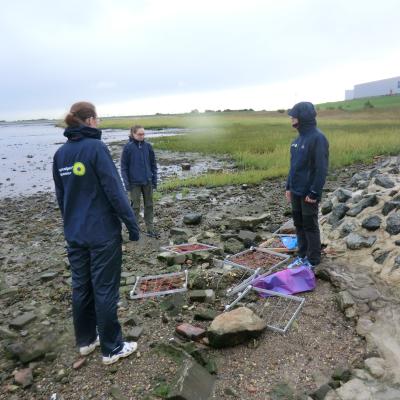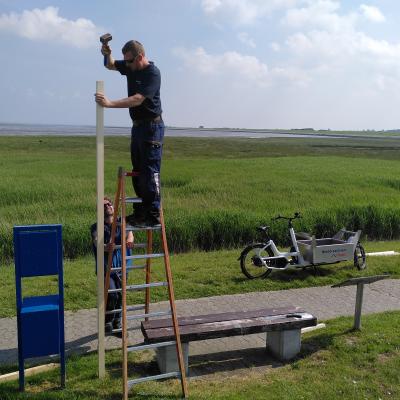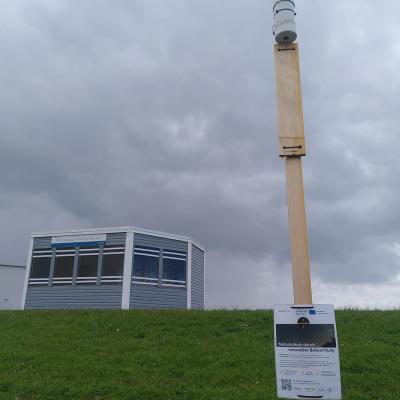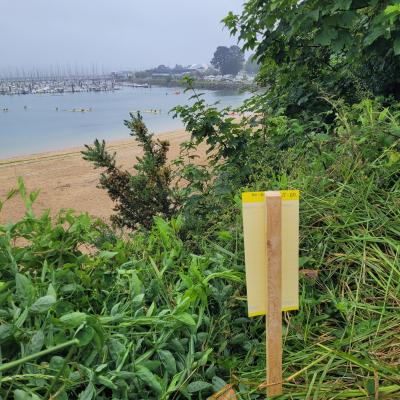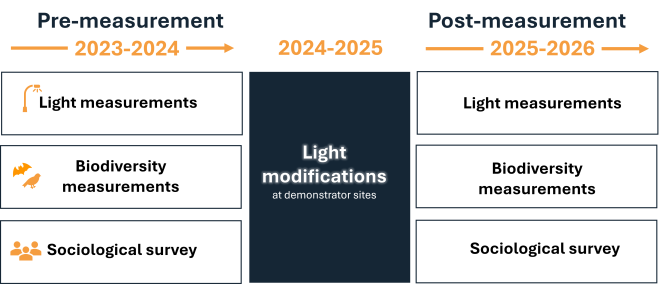
Figure 1 General overview of DARKER SKY monitoring
Our project involves extensive monitoring focused on two main areas: measuring light pollution and assessing its impact on biodiversity. Once developed into guidelines, it will help municipal practitioners—those who may not be experts in light pollution—understand and assess how artificial lighting affects their communities and local biodiversity.
The monitoring framework includes two key protocols: one for measuring and monitoring light levels and another for investigating the ecological effects on birds, bats, insects and marine life. Monitoring will take place before and after the light modifications are implemented at our demonstrator sites, helping us assess the impact of these changes on light pollution and biodiversity.
We’ve also developed a sociological survey to assess the perceptions of the local community regarding light pollution and the new lighting modifications (more info coming soon).
Find out more about light pollution in the North Sea region and its ecological impact here
Light measurements
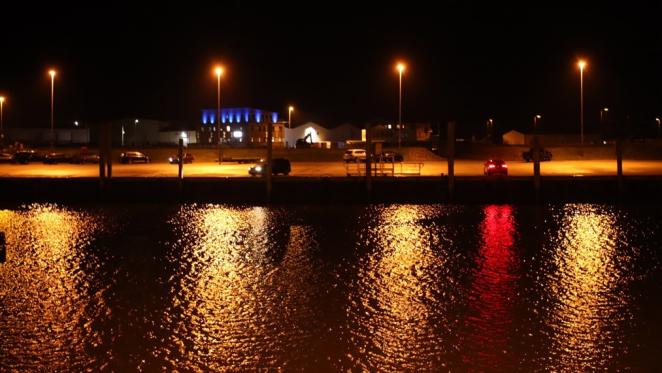
Sample shot of a POI (Credits: A. Hänel)
Assessing light pollution involves measuring many different parameters, like how much light hits a surface (illuminance), how bright a surface appears (luminance) or the light colour. To collect detailed data about light situations, all these different measures are included in our monitoring methodology - on expert and non-expert level. This is crucial for evaluating the effectiveness of light modifications. Each partner region takes these measurements before and after light modifications at our demonstration sites to ensure results are consistent and comparable across different locations and geographical areas.
Hamburg University of Applied Sciences (HAW) leads this effort, supported by experts and knowledge from the Carl von Ossietzky University Oldenburg and the Interreg North Sea Project KID.
Learn more about our “Principles for environmentally-sound lighting”
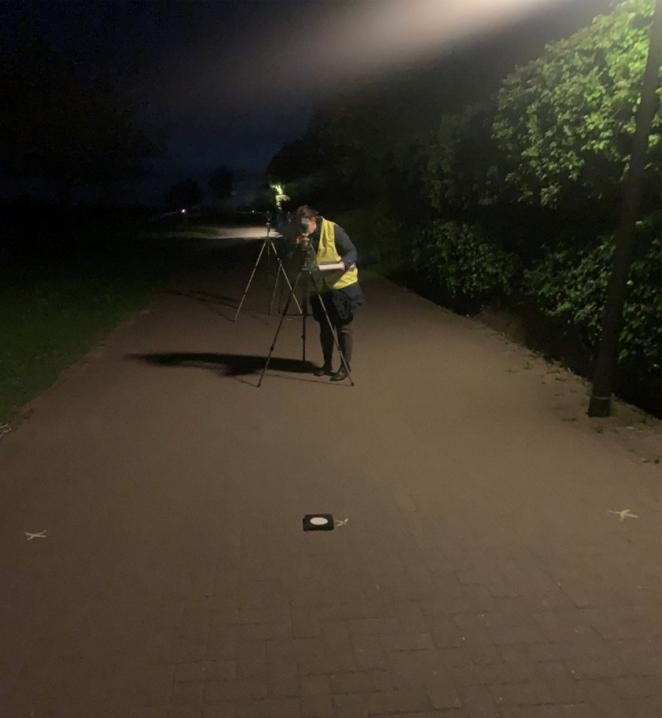
Procedure to measure the luminance distribution with an ILMD using a tripod (Credits: R. Greule)
Summary of our methods
Pilot data collection:
The process begins with detailed demonstrator site data collection, including the documentation of the site's use and its light pollution status quo. Satellite data and maps are used to characterise the light pollution trends over specific areas. Detailed information about both old and new lighting installations is collected, such as lighting plans, calculations or design reports. This helps in understanding the improvements made through the light modification interventions.
Measurement preparations:
Measurement preparation involves identifying Points of Interest (POIs) through site pre-visits with stakeholders to locate significant areas such as boundaries between lit and dark areas, brightly illuminated areas and sensitive habitats.
Measurement conditions and equipment:
During measurements, conditions such as moon phase, weather and time of year are considered to ensure consistent data. Equipment like illuminance metres, luminance metres, chroma metres, spectroradiometers and sky quality cameras are employed, with documentation of all measurement conditions and results for detailed analysis and evaluation.

Luminance measurement using a luminance meter - focussing the lens (Credits: HAW Hamburg)
Adapted expert and non-expert methodology
We offer to decide how detailed lighting measurements should be: either non-expert or expert level (see Table 1 & Table 2).
Non-experts:
Non-expert measurements are basic but enough to get key insights into pilot projects. They are required for all demonstrator sites and are suitable when people lack expertise in lighting or astronomy, have limited access to experts, work with tight budgets or have limited time.
Experts:
Expert-level measurements are more advanced. They use advanced parameters, equipment and methods to achieve higher-quality results. Experts follow their usual standards, though measurements may vary between pilots. This ensures each project gets the right support with accurate and detailed information.
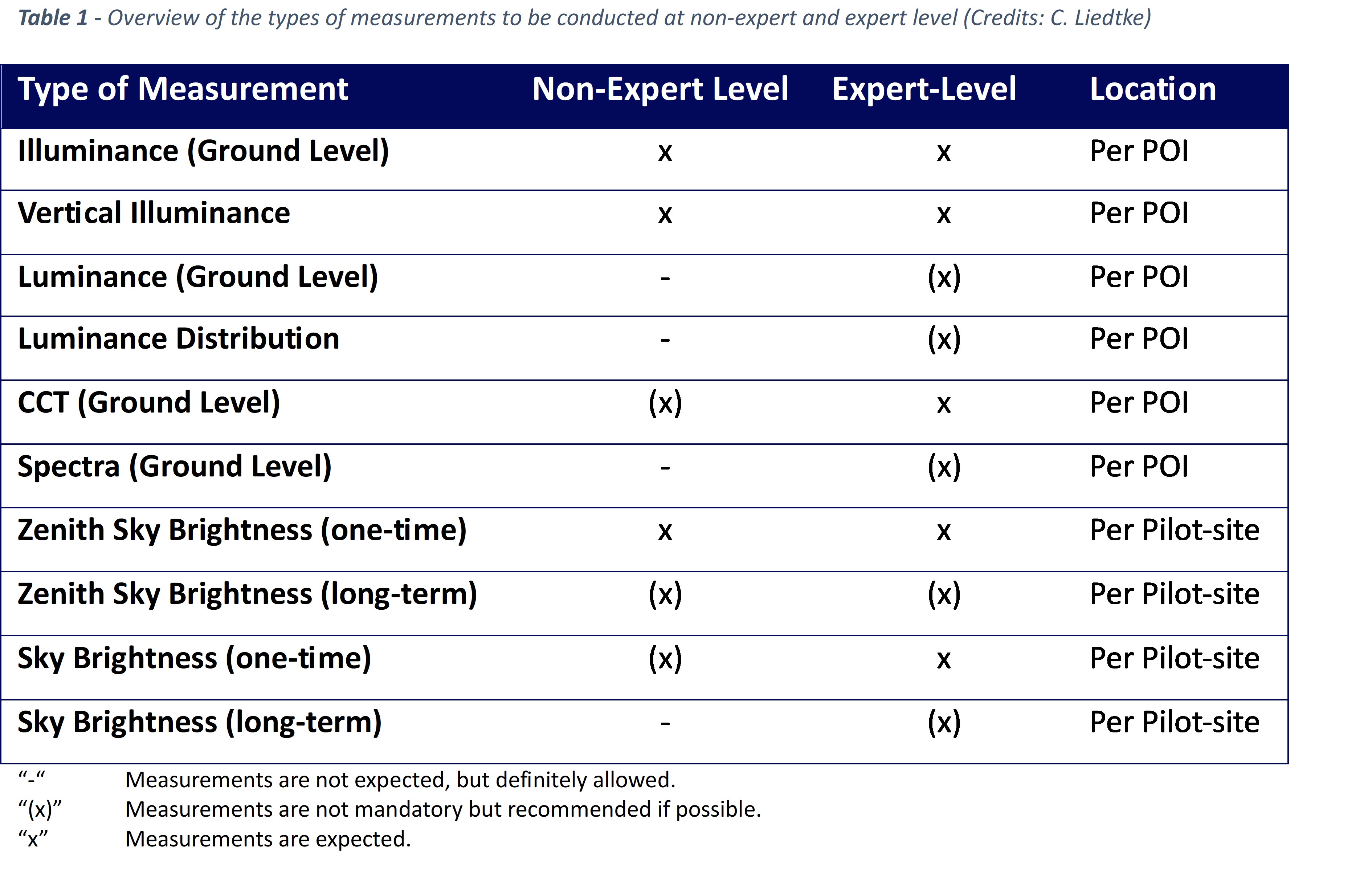
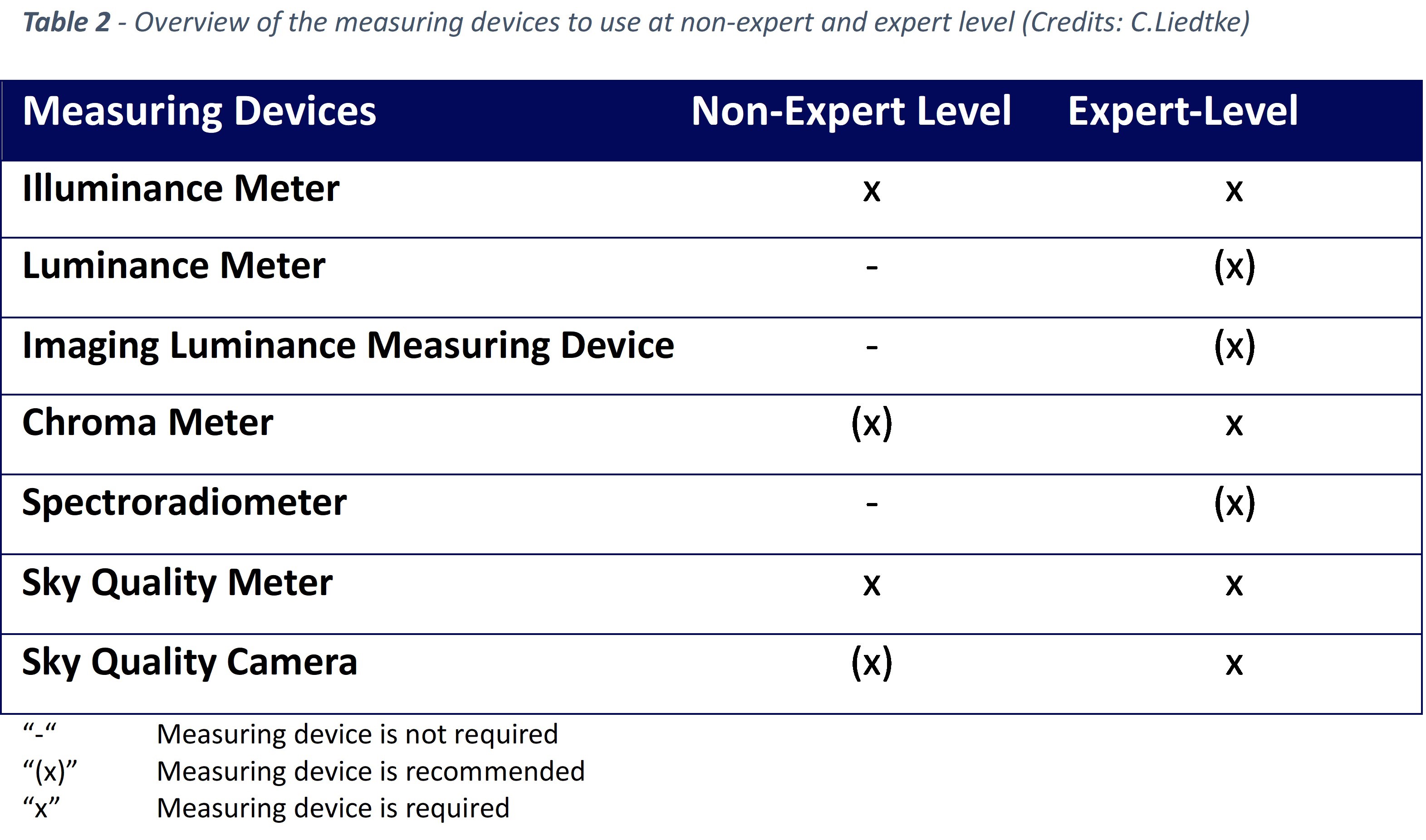
Ecological effects monitoring
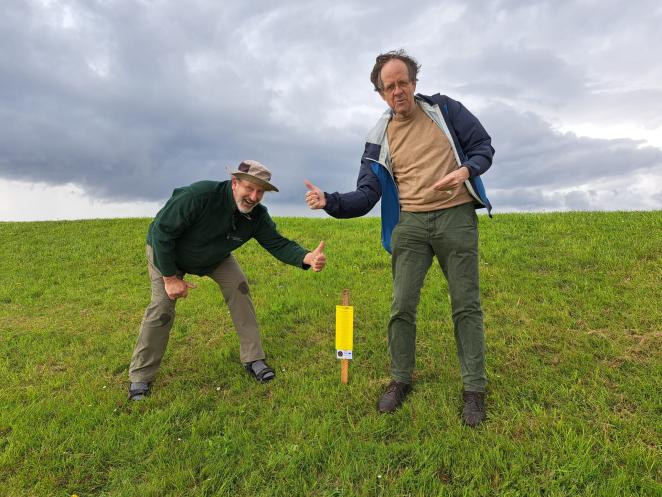
Photo: Piet Zijlstra
We developed a protocol to measure and monitor the effects of artificial light at night on diurnal and nocturnal taxa groups and species. Each partner region conducts regional monitoring before and after installing the light modifications to investigate whether the light modifications installed at the demo sites impact the local and migratory species (diurnal and nocturnal, terrestrial and marine) (see Figure 2 & 3 below).
According to the overall aim of the project, the protocol focuses on ecological connectivity (main corridors used by fauna for migrating or commuting between used habitats) and local marine and terrestrial habitats supporting biodiversity.
The development of the monitoring protocol was coordinated by Université de Bretagne Occidentale (UBO) and supported by environmental experts (VHL & RUG).
Learn more about the process of developing the protocols here.
Summary of methods
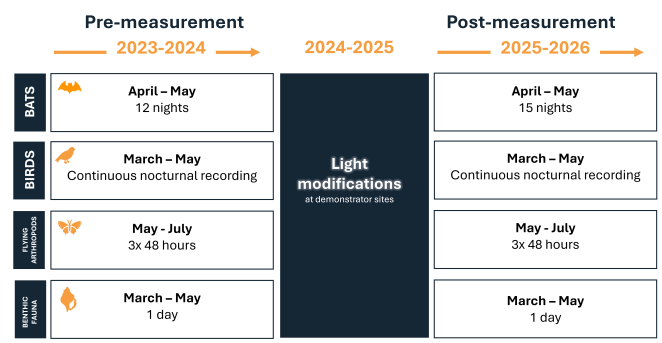
Figure 2 Overview of monitoring periods per species before and after light modifications
The following species were determined as focal species for their ecological, regulatory and cultural significance. Each monitoring method was tailored to capture specific data on behaviour and diversity of focal species:
Bats:
Some European bats are migratory (e.g., Leisleir’s and Nathusius’s bats), while others are sedentary (e.g., Common Pipistrellus and Myotis). Artificial light at night (ALAN) affects all bats by disrupting activities like commuting and foraging. Bat activity can be an indicator of ALAN effects on sites and within North Sea migration corridors.
When? The monitoring of bats takes place from mid March until the end of May during at least 12 nights (under favourable weather conditions).
How? Audiomoth recorders are collecting acoustic activity data and give us information on bats' presence at different nights and within nights.
Birds:
Migratory and breeding birds are impacted by ALAN, affecting e.g. their orientation and/or reproductive cycles. We are investigating the effect on the phenology (periodic events in life cycles) of birds and how it might vary in respect to artificial lighting and time.
When? Monitoring is conducted in spring from March until the end of May, when migratory activity is high and the reproductive period is beginning (e.g. high mating and nest building activity).
How? The collected data is acoustic activity. Nocturnal singing and calling activity is recorded continuously during March to May. Both singing and calling activity is summarised as acoustic activity and analysed with automatic identification (Birdnet).
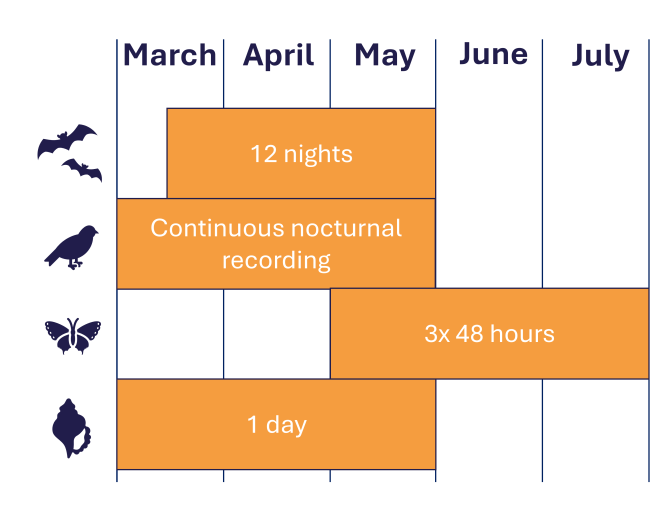
Figure 3 Overview of monitoring periods per species
Flying arthropods:
Several species of flying arthropods are affected by light pollution, especially nocturnal species that rely on natural light cues for navigation, reproduction and feeding (e.g moths, flies, mosquitoes).
When? Monitoring is taking place in May, June and July to get an insight into the effects during the insects’ productive season. Each monitoring is conducted for 48 hours continuously in each month.
How? A sticky trap methodology is adopted. Data will give information on abundance and diversity of flying arthropods at the local habitats.
Benthic fauna:
Marine organisms that inhabit the tidal zones at our demonstrator sites are particularly sensitive to environmental changes. However research about the effects of light pollution is still relatively limited concerning them. We are testing if light modification could change the benthic fauna community.
When? Monitoring is taking place from March until the end of May.
How? Quadrat surveys are used to investigate diversity, abundance and structure of communities.
If you want to know more about more about our monitoring methodology, please contact:
For light: Carolin Liedtke, HAW Hamburg University of Applied Sciences, Carolin.Liedtke@haw-hamburg.de
For biodiversity: Yoann Roulet, Université de Bretagne Occidentale, yoann.roulet@univ-brest.fr

In memory of Dr. Ommo Hüppop
Dr. Ommo Hüppop, a valued member of the DARKER SKY project team, made important contributions to how we monitor the effects of light pollution on birds. His deep knowledge of bird behaviour helped us create clear and effective methods for investigating how artificial light impacts birds. Ommo’s work played a key role in our project’s success and his dedication for protection of birds will always be remembered. We are very grateful for his contribution. He will be greatly missed by everyone in the DARKER SKY team.

